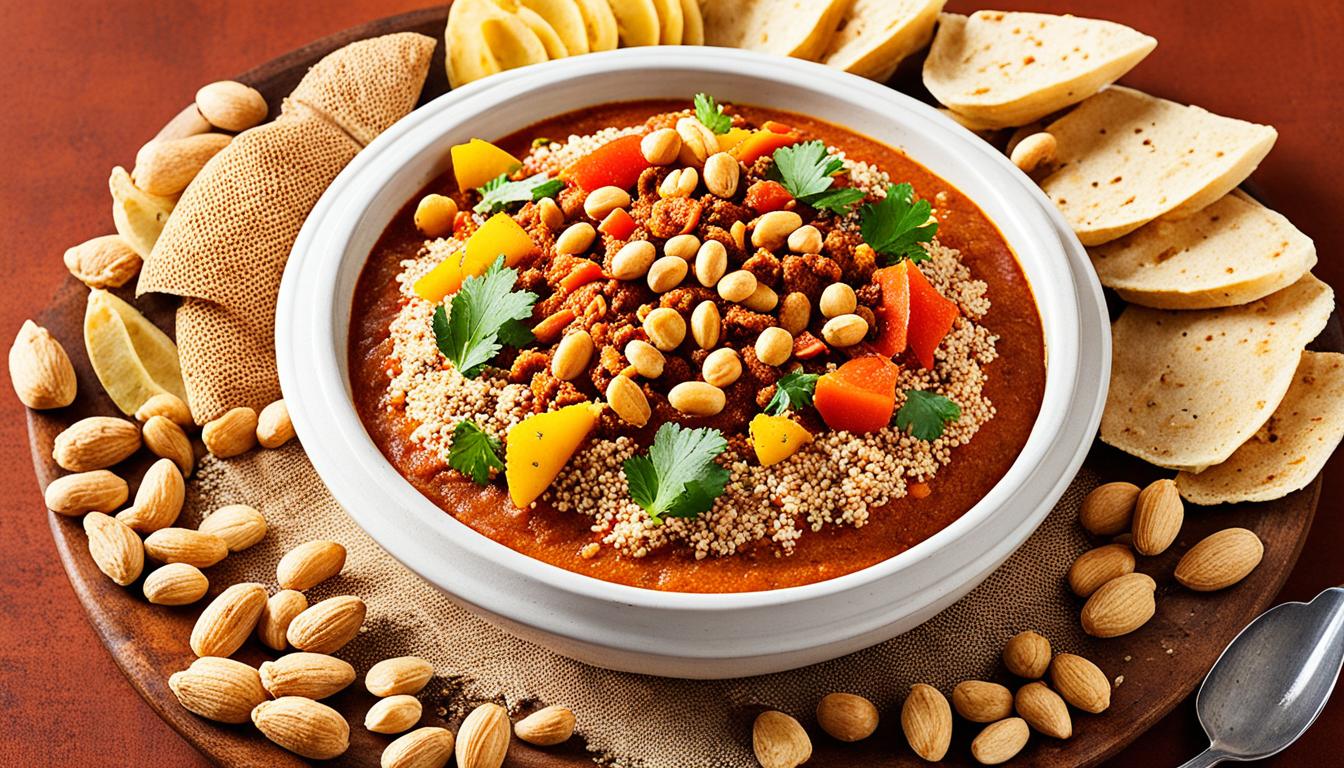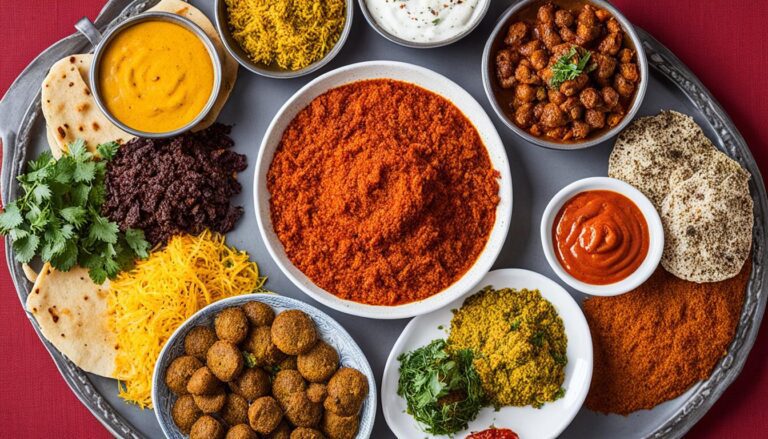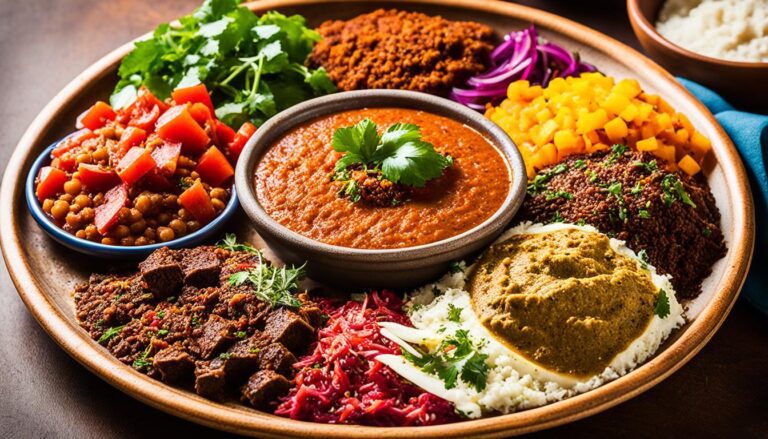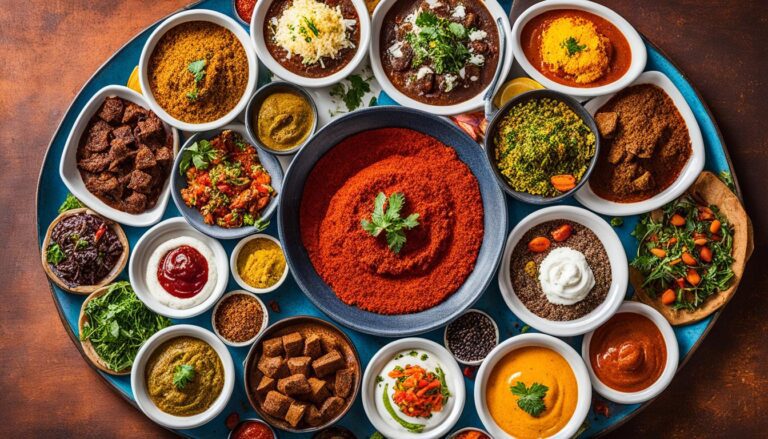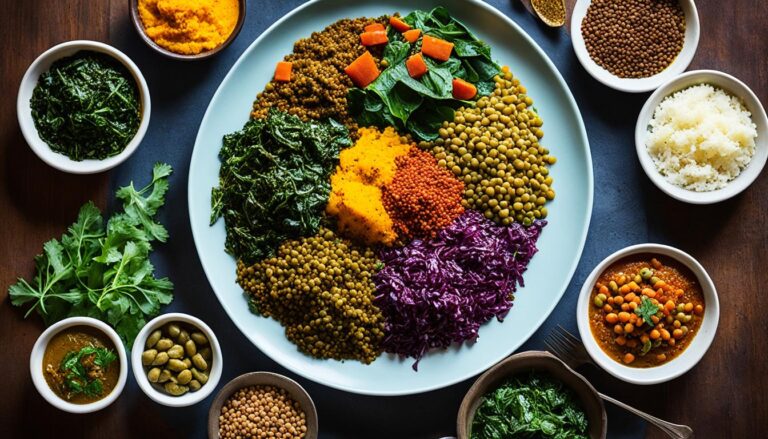Does Ethiopian Food Use Peanuts?
When it comes to exploring the diverse and flavorful world of Ethiopian cuisine, one question often arises – does Ethiopian food use peanuts? From aromatic spices to hearty stews, Ethiopian dishes are known for their unique blend of flavors. But where do peanuts fit into this vibrant culinary tapestry?
Join us as we dig deep into the world of Ethiopian cuisine to uncover the truth about peanuts. Are they a common ingredient? Do they play a significant role in Ethiopian dishes? And what alternatives are available for those with peanut allergies or dietary restrictions?
Get ready for a journey that will tantalize your taste buds and challenge your preconceptions about Ethiopian food. Let’s separate fact from fiction and explore the fascinating relationship between Ethiopian cuisine and peanuts.
Key Takeaways:
- Is peanut a common ingredient in Ethiopian dishes?
- What role do peanuts play in Ethiopian cuisine?
- Are there alternatives for those with peanut allergies?
- Explore the vibrant flavors and spices of Ethiopian cuisine
- Discover peanut-free Ethiopian delights
A Closer Look at Ethiopian Cuisine
Before we dive into the peanut aspect, let’s take a moment to appreciate the diversity and richness of Ethiopian cuisine. Ethiopian food is known for its unique blend of spices, hearty stews, and injera – a sourdough flatbread that serves as a staple.
From the vibrant colors to the bold flavors, Ethiopian dishes offer a culinary experience like no other. The combination of spices, such as turmeric, cumin, and paprika, creates a symphony of tastes in each bite. Whether you are a fan of spicy or mild dishes, Ethiopian cuisine has something to satisfy every palate.
One iconic feature of Ethiopian dining is the communal eating style. Traditionally, meals are served on a large platter called a “mesob” and shared among friends and family. This communal experience not only adds to the enjoyment of the meal but also reflects the culture of togetherness and sharing.
Injera, a sourdough flatbread made from fermented teff flour, is a fundamental element of Ethiopian cuisine. It serves as a base for various dishes, providing a tangy and slightly sour flavor. Injera is typically torn into pieces and used to scoop up the various stews and sauces, adding a unique texture to the dining experience.
Exploring Ethiopian cuisine means immersing yourself in a rich culinary heritage that dates back thousands of years. Each dish tells a story and reflects the cultural diversity of the country. From the fragrant spices to the artful presentation, Ethiopian food has a way of delighting both the senses and the soul.
Common Ingredients in Ethiopian Dishes
To understand if peanuts are used in Ethiopian cooking, it’s crucial to explore the common ingredients found in their dishes. Ethiopian cuisine is known for its diverse flavors and vibrant spices, resulting in a culinary experience like no other. From lentils and chickpeas to various vegetables, Ethiopian food celebrates a rich assortment of ingredients.
One of the defining features of Ethiopian cuisine is the traditional use of spices. Spices like berbere and mitmita are key components in many Ethiopian dishes, adding depth, heat, and complexity to the flavors. Berbere, a blend of chili peppers, garlic, ginger, and other spices, is often used in stews and meat dishes, while mitmita, a fiery spice blend, is commonly found in various vegetable and lentil preparations.
Moreover, Ethiopian cuisine incorporates a wide range of vegetables, including but not limited to collard greens, cabbage, carrots, and potatoes, which are used in various dishes. These vegetables contribute to the overall nutritional value and add a delightful texture to the meals.
Lentils and chickpeas are also staple ingredients in Ethiopian cooking, frequently appearing in dishes like lentil stews, soups, and curries. These legumes provide a substantial source of protein in Ethiopian vegetarian and vegan cuisines.
While peanuts are not among the most common ingredients in Ethiopian dishes, their absence does not diminish the vibrant and flavorful experience Ethiopian cuisine has to offer. Ethiopian food is a celebration of spices, vegetables, legumes, and traditional cooking techniques that elevate the dining experience to a whole new level of satisfaction.
Allergies and Dietary Restrictions in Ethiopian Food
As we consider the presence of peanuts in Ethiopian food, it’s important to address potential allergens and dietary restrictions. Peanut allergies are a serious concern for many individuals, so we need to ascertain if peanuts are commonly used or if Ethiopian cuisine has alternatives for those with dietary restrictions.
Ethiopian cuisine is known for its diverse range of flavors and ingredients, offering a multitude of options for individuals with dietary restrictions. While peanuts can be found in certain Ethiopian dishes, they are not a pervasive ingredient across the entire cuisine. Those with peanut allergies can still enjoy the rich and flavorful Ethiopian food.
For individuals who are allergic to peanuts or prefer to avoid them, there are many peanut-free Ethiopian dishes to savor. Whether it’s injera with lentils, vegetable stews, or spicy berbere-seasoned dishes, Ethiopian cuisine offers numerous alternatives that showcase its vibrant flavors.
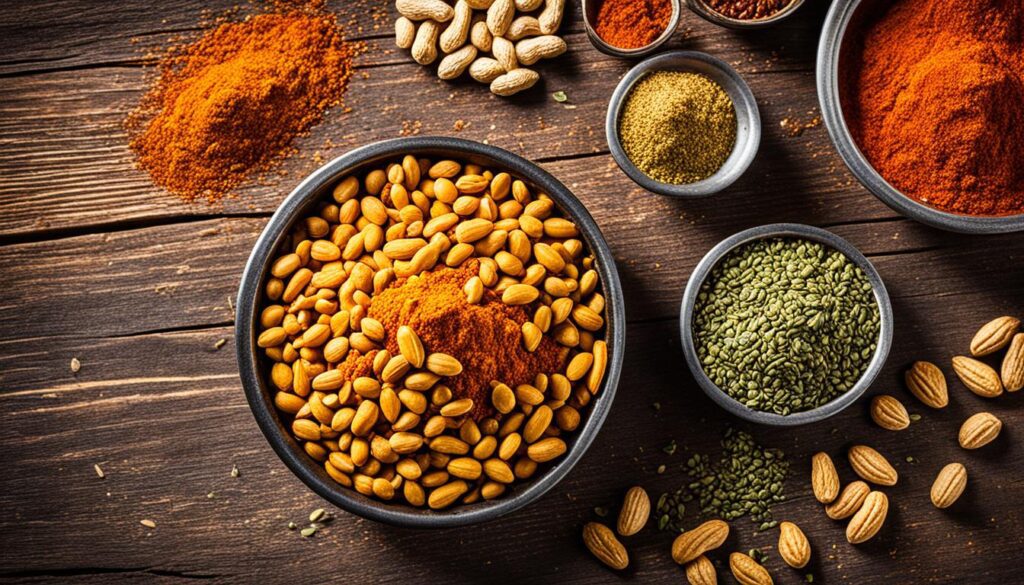
The Role of Peanuts in Ethiopian Dishes
Now, let’s explore whether peanuts play a significant role in Ethiopian food. While peanuts are not commonly used as a primary ingredient, they do make appearances in certain dishes, such as sauces and side dishes like lentil stews or vegetable preparations.
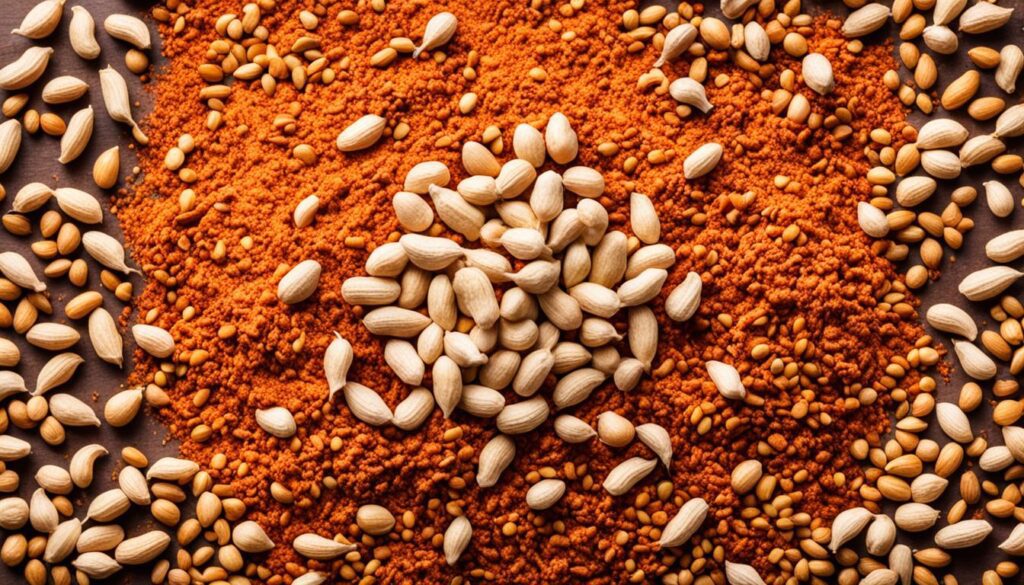
Peanut-Free Ethiopian Delights
For those with peanut allergies or who prefer to avoid peanuts, you’ll be happy to know that Ethiopian cuisine offers plenty of delicious dishes that are free from peanuts. These flavorful alternatives allow everyone to enjoy the vibrant tastes of Ethiopian food without any concerns.
One popular peanut-free dish is Kitfo, a traditional Ethiopian steak tartare made with finely minced beef and seasoned with spices such as mitmita and niter kibbeh. Served with injera, a sourdough flatbread, and accompanied by a variety of Ethiopian side dishes, Kitfo is a must-try for anyone looking to explore Ethiopian cuisine without peanuts.
Another excellent choice is Doro Wat, a mouthwatering spicy chicken stew. This flavorful dish is made with marinated chicken, onions, garlic, and a blend of aromatic Ethiopian spices like berbere. It is traditionally served with injera or rice, offering a satisfying and peanut-free dining experience.
If you’re a fan of vegetarian meals, you’ll love Misir Wat, a spicy lentil stew. This hearty dish combines red lentils with onions, garlic, and a savory mixture of Ethiopian spices. Misir Wat is a staple in Ethiopian cuisine and a fantastic option for those seeking peanut alternatives in Ethiopian food.
For a refreshing and light option, try Gomen, a collard greens dish that is a popular addition to any Ethiopian meal. Cooked with garlic, onions, and spices, Gomen offers a burst of flavors without using peanuts.
Whether you have a peanut allergy or simply want to explore peanut-free options, Ethiopian cuisine has a wide range of dishes to satisfy your palate. These flavorful alternatives will allow you to immerse yourself in the rich Ethiopian culinary traditions without compromising your dietary preferences or restrictions.
So, if you’re craving Ethiopian food but want to steer clear of peanuts, don’t worry! You can still enjoy the incredible flavors and unique dishes that this vibrant cuisine has to offer. Try out these peanut-free Ethiopian delights and embark on a tasty adventure!
Conclusion
In conclusion, Ethiopian cuisine offers a captivating fusion of flavors that showcase the country’s rich culinary heritage. While peanuts are occasionally used in Ethiopian dishes, they primarily appear in sauces and specific side dishes. However, individuals with peanut allergies or those who choose to avoid peanuts altogether can still indulge in the diverse and delicious Ethiopian food scene.
For those who relish the nutty taste, peanut-based sauces provide a tantalizing addition to Ethiopian meals. However, the culinary genius of Ethiopian cuisine extends far beyond peanuts. With an abundance of lentils, chickpeas, and aromatic spices like berbere and mitmita, traditional Ethiopian dishes offer an array of options that are free from peanuts.
Exploring Ethiopian cuisine is a delightful adventure for any food lover. Whether you have a passion for peanuts or require peanut-free alternatives, the vibrant flavors, hearty stews, and sourdough flatbread known as injera will captivate your taste buds and leave you craving more. So, dive into the world of Ethiopian food and savor the diverse culinary creations that this remarkable cuisine has to offer.

